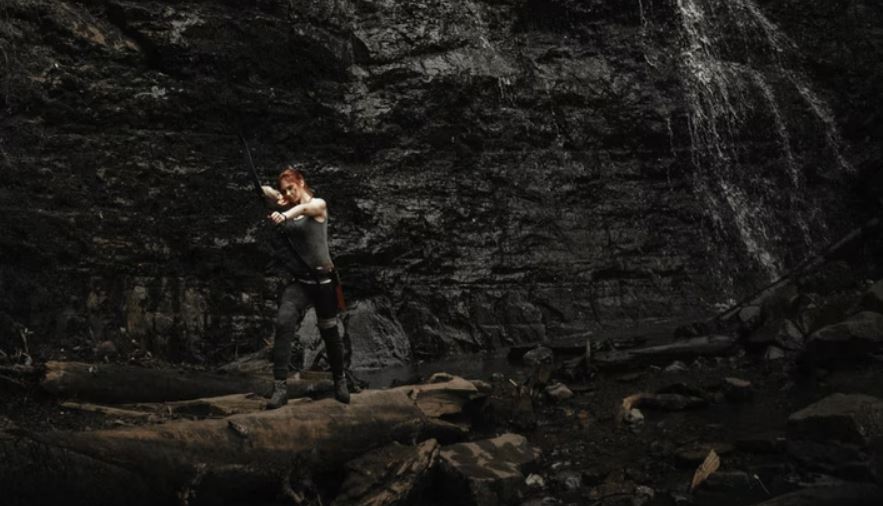Tomb Raider is one of the most successful British video game franchises of all time. This action-adventure series has become an integral part of popular culture for a generation of Brits and those overseas too, thanks largely to its success on game consoles and at the movie box offices.
According to one of the game’s most recent publishers, Square Enix, the franchise had shifted more than 88 million units worldwide as of 2022. Within this article, we’ll explore the rise of Tomb Raider and the fascination with the game’s now-unmistakable protagonist Lara Croft.

Lara Croft and Toby Gard: A match made in Core Design
It all started at a British game development studio known as Core Design. Video game designer Toby Gard was given the brief to design and develop the original Tomb Raider concept. Gard’s role was hugely influential, as he was the brains behind the creation of the world-renowned protagonist Lara Croft. Gard animated a host of other characters that have gone on to become integral to the Tomb Raider storyline too. Gard had total control over how Lara Croft was created. He even refused to ramp up the character’s so-called ‘sex appeal’, rejecting the studio’s request to include a nude code and turn her into some kind of ‘Page 3’ style character. Instead, Gard wanted Croft to become a genuine “heroine”. Someone that was “cool, collected, in control” despite the dangerous that lurk around every corner.

The original Tomb Raider game was released on PlayStation, Sega Saturn and desktop PC – MS-DOS rather than Windows 98. It follows the intrepid explorer and archaeologist, Croft, who is selected by a woman named Jacqueline Natla to unearth the Scion of Atlantis. The search takes a dark turn, with Croft eventually going head-to-head with Natla to retrieve the Scion.
The cinematic style, aligned with next-generation graphics, made Tomb Raider one of the most immersive video games of the century. It was no surprise to find that its sequel – Tomb Raider II – would become one of the most eagerly awaited releases of 1997. These were the first two of six releases in the original Tomb Raider timeline. The series ran through from 1996 to 2003 and was eventually released on additional consoles such as the Sega Dreamcast and PlayStation 2. The Tomb Raider franchise even managed to gravitate into the iGaming industry too. The sector’s pioneering software developer, Microgaming, developed a branded Tomb Raider slot that is exclusively licensed to them by Eidos Interactive, the game’s original publisher.
It is yet another example of how the franchise has become such an immersive gaming experience. The title is considered a favourite wherever it’s listed at an online casino, with its cross-platform capabilities suitable for mobile operators as well as desktop sites via any web browser from Google Chrome to Mozilla Firefox. It also incorporates a host of visuals and audio from the video game, which helps it resonate strongly with console and PC gamers.
Introducing the Legend and Survivor Timelines
Following the success of the Original Tomb Raider timeline, there has been two additional timelines, building on the legend of the series. The ‘Legend’ timeline arrived in 2006 after a three-year hiatus of Tomb Raider releases. Tomb Raider: Legend was released on PlayStation 2, Xbox, Xbox 360, PSP, Game Boy Advance, GameCube, PC and Nintendo DS, such was the clamour for its return. A year later, Tomb Raider: Anniversary was released to celebrate a decade of the franchise. Tomb Raider: Underworld closed the Legend timeline in 2008, becoming the third and final game to be developed by the Crystal Dynamics studio.
The Legend release in 2006 received tremendous critical acclaim, but the following two titles received rather more lukewarm responses. The general feeling was that the games were becoming too samey and predictable for any loyal players of the franchise.
Five years later, the ‘Survivor’ timeline was launched with Tomb Raider: A Survivor is Born. This reboot was followed by the 2015 Rise of the Tomb Raider and Shadow of the Tomb Raider in 2018. The latter is said to be the final instalment of the Survivor timeline.
It doesn’t appear to be the end for the franchise, though. Crystal Dynamics has confirmed a new release is in the works. The new game is being built using Unreal Engine 5, with the studio able to deliver “next-level storytelling and gameplay experiences”, according to its official social post. For long-standing players of the franchise, it’s a case of watch this space.


Leave a Reply